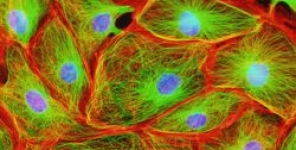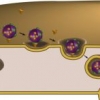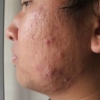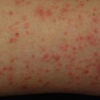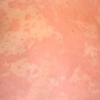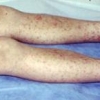Reattività delle IgA sieriche contro GroEL dello Streptococcus sanguinis e contro hnRNP A2/B1 umana, nei pazienti con malattia di Behçet
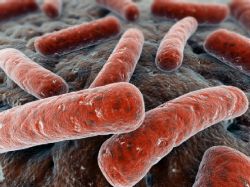 Da molto tempo si ritiene che gli agenti infettivi, in particolare lo Streptococcus sanguinis (S. sanguinis) e il virus herpes simplex, siano i principali fattori scatenanti la malattia di Behçet (BD).
Da molto tempo si ritiene che gli agenti infettivi, in particolare lo Streptococcus sanguinis (S. sanguinis) e il virus herpes simplex, siano i principali fattori scatenanti la malattia di Behçet (BD).
Obiettivi: Lo scopo di questo studio è stato quello di identificare un antigene anti-S. sanguinis che reagisca con gli anticorpi sierici IgA nei pazienti con BD.
Metodi: Abbiamo individuato una proteina bersaglio attraverso l'analisi proteomica e abbiamo valutato la reattività delle IgA sieriche di 100 pazienti con BD nei confronti della proteina bersaglio streptococcica identificata e della hnRNP A2/B1 umana. Sono state inoltre valutate le sequenze degli epitopi omologhi tra la proteina bersaglio streptococcica e la hnRNP A2/B1 umana.
Risultati: Sono state rilevate quattro bande proteiche mediante l'immuno-precipitazione, ed è stata identificata la chaperonina GroEL mediante l'analisi proteomica. È stata rilevata la reattività delle IgA sieriche contro la GroEL ricombinante di S. sanguinis in 77 su 100 pazienti con BD (77%) e in 21 su 70 soggetti sani di controllo (30%). Inoltre, la reattività delle IgA sieriche contro l'hnRNP A2/B1 umana ricombinante è stata riscontrata in 79 su 100 pazienti con BD (79%) e in 8 su 70 soggetti sani di controllo (11.4%). Tra gli otto epitopi distintivi con omologia significativa tra la GroEl di S. sanguinis e hnRNP A2/B1 umana, la reattività delle IgA sieriche nei pazienti con BD è stata nettamente superiore con l'epitopo 3 (peptide 33-46 di hnRNP A2/B1 e peptide 57-70 di GroEL) e l'epitopo 6 (peptide 177-188 di hnRNP A2/B1 e peptide 347-358 di GroEL).
Conclusione: Abbiamo identificato l proteina GroEL di S. sanguinis come bersaglio della reattività degli anticorpi IgA sierici anti-S. sanguinis nei pazienti con BD. Inoltre, i pazienti con BD hanno mostrato una reattività delle IgA sieriche contro le regioni degli epitopi omologhi tra GroEl di S. sanguinis GroEL e hnRNP A2/B1 umana.
Storia della pubblicazione:
Titolo: Serum IgA reactivity against GroEL of Streptococcus sanguinis and human hnRNP A2/B1 in patients with Behçet's disease
Rivista: British Journal of Dermatology. doi: 10.1111/bjd.12128
Autori: S.B. Cho, Z. Zheng, K.J. Ahn, M.J. Choi, S. Cho, D.-Y. Kim, H.S. Lee, D. Bang
Affiliazioni: Department of Dermatology and Cutaneous Biology Research Institute, Yonsei University College of Medicine, Seoul, Korea
Department of Science Education, Jeju National University, Jeju, Korea
Department of Biostatistics, Yonsei University College of Medicine, Seoul, Korea
Abstract:
Background: Infectious agents, especially Streptococcus sanguinis (S. sanguinis) and herpes simplex virus, have long been postulated to be major triggering factors for Behçet's disease (BD).
Objectives: The aim of this study was to identify an anti-S. sanguinis antigen reacting with serum IgA antibody in BD patients.
Methods: We detected a target protein by proteomics analysis and evaluated serum IgA reactivity of 100 BD patients against the identified streptococcal target protein and human hnRNP A2/B1. Homologous epitope sequences between the streptococcal target protein and human hnRNP A2/B1 were also evaluated.
Results: Four protein bands were detected by immunoprecipitation, and chaperonin GroEL was identified by a proteomics analysis. Reactivity of serum IgA against recombinant S. sanguinis GroEL was detected in 77 of 100 BD patients (77%) and in 21 of 70 healthy controls (30%). In addition, reactivity of serum IgA against human recombinant hnRNP A2/B1 was present in 79 of 100 BD patients (79%) and in 8 of 70 healthy controls (11.4%). Among the eight distinctive epitopes with significant homology between S. sanguinis GroEL and human hnRNP A2/B1, the serum IgA reactivity of BD patients was markedly higher with epitope 3 (hnRNP A2/B1 peptide 33-46 and GroEL peptide 57-70) and epitope 6 (hnRNP A2/B1 peptide 177-188 and GroEL peptide 347-358).
Conclusion: We identified a S. sanguinis GroEL protein as a target of serum anti-S. sanguinis IgA antibody reactivity in BD patients. In addition, BD patients exhibited serum IgA reactivity against homologous epitope regions between S. sanguinis GroEL and human hnRNP A2/B1.
